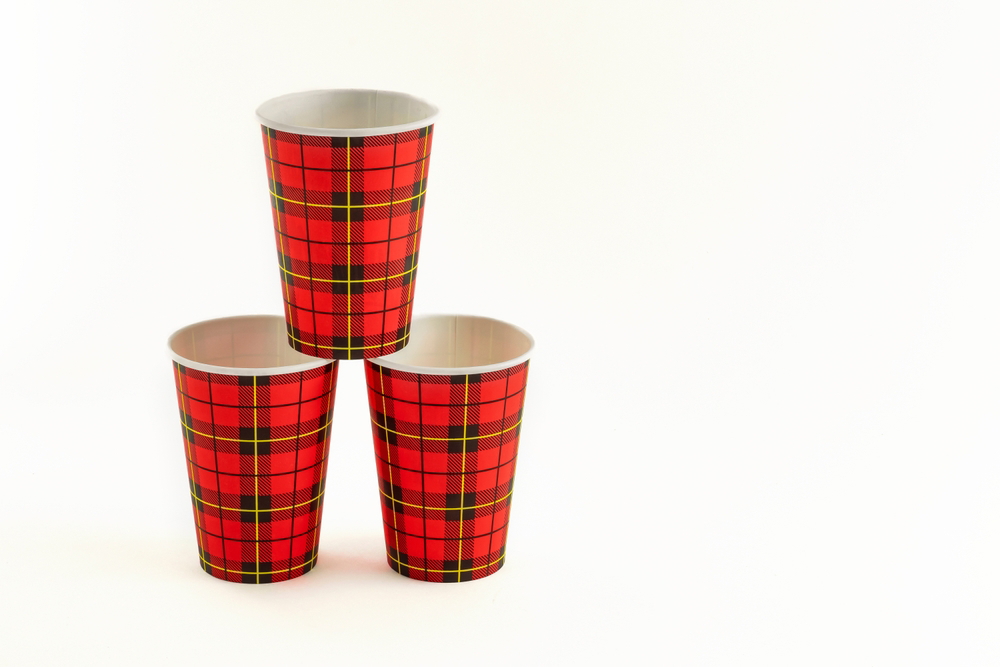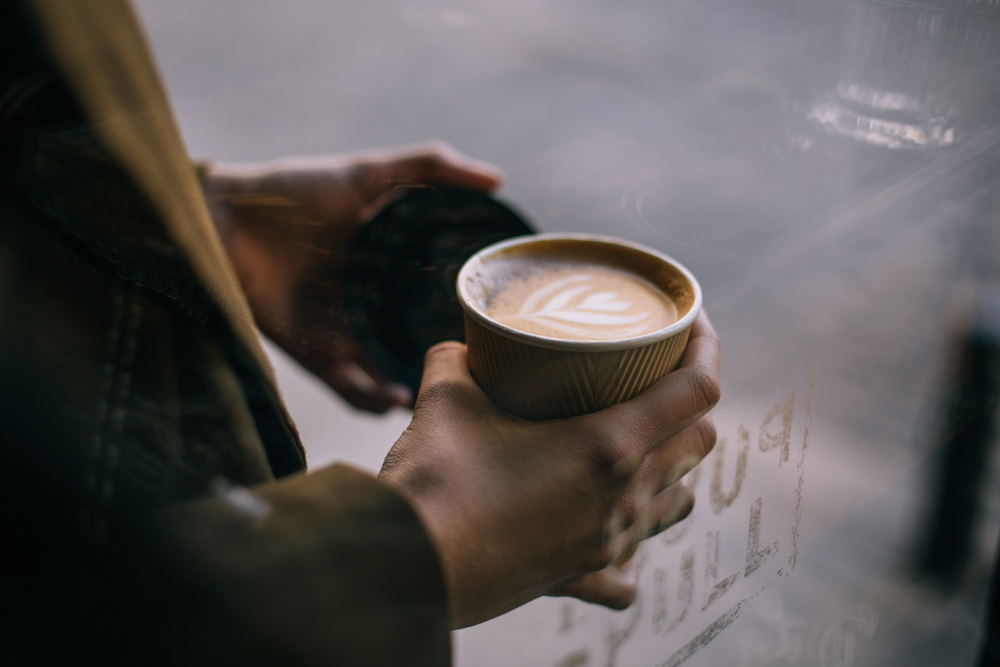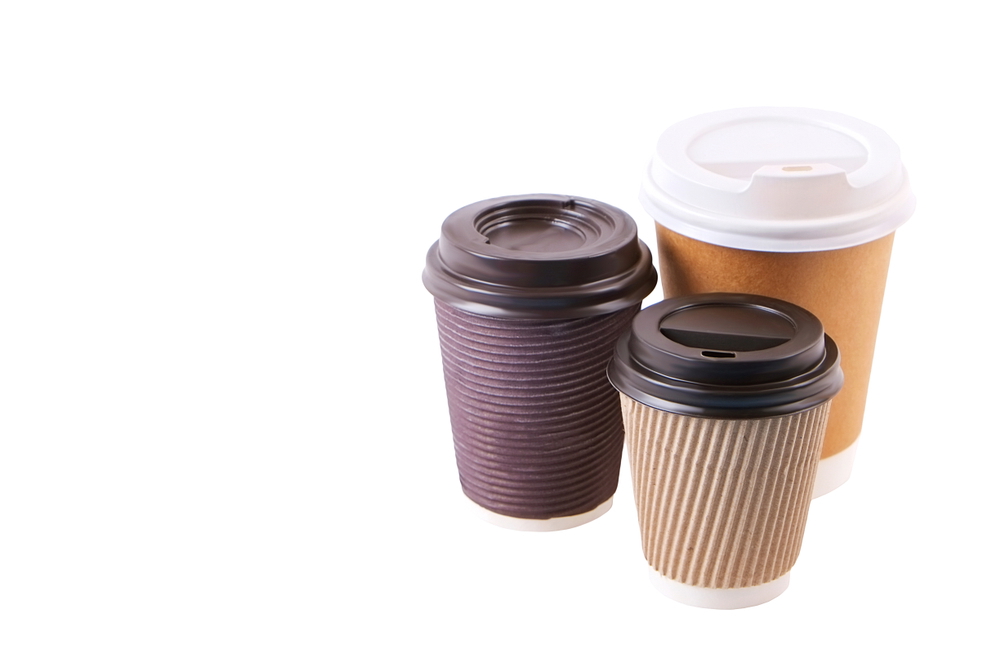PE Coating vs Water-Based Coating on Paper Cups
By Anttoni Taimela · 26. June 2024
Deciding between PE coating vs water-based coating on paper cups matters not just in terms of product performance but increasingly in light of environmental impact.
PE coatings offer durability and moisture resistance but raise sustainability concerns due to their non-biodegradable nature.
Conversely, water-based coatings are gaining traction as eco-friendly alternatives, though they may come with some trade-offs in cost and widespread availability.
In this article, we dive directly into the heart of this debate, closely examining both options to assist you in making an informed decision on the best cup coating choice for your needs and values. 🌍
PE Coating: The Traditional Choice for Paper Cups
 PE coated paper cups
PE coated paper cups
PE coating has long been the backbone of the paper cup industry. Its ability to accommodate a wide range of beverages, from hot coffee to cold water, without compromising structural integrity, makes it a preferred choice for many manufacturers.
The benefits of PE coating include:
- Tough and flexible nature, enhancing the durability of paper cups 💪
- Provides necessary thermal protection against extreme temperatures ❄️🔥
- Retains beverage temperature, ensuring that your hot drinks remain hot and your cold drinks stay refreshing.
However, the use of PE coating comes with its share of drawbacks, especially concerning environmental sustainability.
While it excels in preventing leaks and spills, the environmental impact of PE coatings cannot be overlooked. 🌱 As we delve deeper, we will explore both the strengths and limitations of PE coated paper cups.
Understanding PE Coating
PE coating, or polyethylene coating, involves applying a thin layer of polyethylene to paper cups to shield them from moisture and other environmental factors.
This process, known as extrusion coating, allows for varying amounts of PE to be applied, accommodating different requirements such as waterproofing or heat-sealing capabilities.
The result is a paper cup that is more tear-resistant and provides additional stiffness, enhancing its durability and resistance to wrinkling.
The application process of PE coating is relatively straightforward and cost-effective, which has contributed to its widespread use.
The PE protective film ensures that the paper cups can withstand the rigors of daily use, whether for hot beverages like coffee or cold drinks.
However, as we will see, the environmental impact of this coating is a significant downside that cannot be ignored. 🛑
Advantages of PE Coated Paper Cups
 woman holding a cup of coffee
woman holding a cup of coffee
One of the primary advantages of PE coated paper cups is their superior resistance to liquids, water, and grease.
This nearly 100% resistance makes them an excellent choice for a variety of beverages, ensuring that the cups do not leak or degrade.
The polyethylene coating significantly enhances key attributes such as moisture resistance and grease resistance of the paper board. In addition, it also improves the overall durability of the board.
This resistance is crucial in food packaging, as it ensures that both hot and cold beverages can be held without compromising the cup’s integrity.
Whether it’s a hot paper cup for your morning coffee or a cold paper cup for an iced drink, PE coated paper cups deliver consistent performance, making them a versatile option in the food packaging industry. ☕🥤
Disadvantages and Environmental Concerns
Despite their functional benefits, PE coated paper cups pose significant environmental concerns. Polyethylene, being a non-biodegradable material, contributes to long-term environmental risks.
The recycling processes for PE coated paper cups are complex, requiring separation of the PE layer from the paper fibers, which often leads to inefficiencies and increased waste. 🗑️
Moreover, the cost factors associated with PE coatings need to be weighed against their environmental impact.
While they offer a durable and reliable solution for beverage containment, the challenges in recycling and the non-biodegradable nature of PE coatings call for a reevaluation of their use in favor of more sustainable alternatives. 🌱
Water-Based Coating: The Rising Star in Sustainable Packaging
In the quest for more sustainable packaging solutions, water-based coatings have emerged as a promising alternative to traditional plastic coatings.
These coatings are more sustainable, requiring less material to prevent leakage compared to PE and PLA coatings.
The composition of water-based coatings includes a blend of natural materials like starch and cellulose, and minerals such as calcium carbonate, alongside synthetic polymers like acrylic and polylactic acid (PLA).
The eco-friendly nature of water-based coatings makes them an attractive option for manufacturers and consumers alike.
By reducing the dependence on traditional petroleum-based plastics, these coatings offer a pathway towards a more sustainable future in food packaging.
🌿 In the following subsections, we will explore the composition, popularity, and limitations of water-based coated paper cups, which are made from water based paper sheets.
Composition and Properties of Water-Based Coatings
Water-based coatings are composed of a blend of:
- Water
- Natural materials like starch and cellulose
- Minerals such as calcium carbonate
- Synthetic polymers like acrylic and PLA
This combination not only provides an eco-friendly alternative to traditional plastic coatings but also makes the compostable paper cup more compostable. ♻️
The application of water-based coatings, including aqueous coating, can be effectively achieved using methods such as reverse roll coating, which handles diverse viscosities and gives control over the amount of coating applied.
This method ensures that the coating is evenly distributed, providing the necessary barrier properties without compromising the environmental benefits.
Why Water-Based Coatings Are Gaining Popularity
The growing popularity of water-based coatings can be attributed to several factors, including:
- Consumer preferences shifting towards sustainability 🌍
- Increased demand for products that reduce environmental impact
- Design innovations, such as the development of reusable paper cups, that align with environmental protection standards and promote sustainable packaging solutions.
Water-based barrier coatings offer a significant sustainability advantage due to their plastic-free composition and 100% biodegradability.
As environmental considerations become paramount, both consumers and regulators are favoring products that meet these criteria, further driving the adoption of water-based coatings in the industry.
Limitations of Water-Based Coated Paper Cups
Despite their advantages, water-based coated paper cups also face certain limitations. They are generally more expensive than PE-lined cups and are not as widely available.
This higher cost can be a barrier for some manufacturers and consumers, limiting their adoption in the market.
Performance differences also exist, with water-based coatings potentially resulting in a shorter shelf life for the product compared to PE coatings.
Additionally, under the Single-Use Plastic Directive, aqueous-lined cups must be properly labeled due to their small amount of polymers, presenting an additional regulatory compliance requirement.
Educating consumers about the benefits and limitations of water-based coatings is crucial for their broader acceptance. 📚
Side-by-Side Comparison: PE Coating vs Water-Based Coating
 double-wall paper cups
double-wall paper cups
When comparing PE coating and water-based coating, several factors come into play, including cost efficiency, performance, and environmental impact.
While PE coatings offer a simple and cost-effective solution, water-based coatings provide a more sustainable alternative with their biodegradable properties.
Both coatings have their strengths and weaknesses, and the choice between them depends on various factors such as the intended use, cost considerations, and environmental impact.
Cost Efficiency and Performance
Cost efficiency and performance are critical factors when choosing between PE and water-based coatings.
PE coating provides a cost-effective solution due to its easy application process and strong adherence without the need for chemical solvents.
This makes it a low-cost solution for many manufacturers, enabling them to produce durable and reliable paper cups at a lower cost. 💸
On the other hand, water-based coatings reduce material usage by being absorbed into paper fibers, which can result in long-term cost savings.
However, they are generally more expensive upfront compared to PE coatings. A thorough cost-benefit analysis is essential to determine which type of coating offers the best balance between immediate costs and long-term environmental benefits. 📊
Impact on Recycling and Waste Management
The impact on recycling and waste management is another crucial aspect to consider. Here are some key points to note:
- PE coated paper is not biodegradable or compostable, which poses significant challenges for recycling processes.
- The separation of the PE layer from the paper fibers is labor-intensive.
- This often leads to most PE coated paper being discarded in landfills. 🗑️
In contrast, water-based coatings are more environmentally friendly due to their biodegradability and compostability.
Innovative recycling-friendly coatings, such as those used in the ButterflyCup, are designed to integrate more easily into recycling streams, simplifying the recycling process and reducing the environmental footprint.
This makes water-based coatings a more sustainable alternative in terms of waste management. 🌿
Innovations in Paper Cup Coatings
The paper cup industry is constantly evolving, with innovations in coatings playing a significant role in enhancing sustainability.
From biodegradable options like PLA to advancements in technology that enable more efficient coating development, the industry is making strides towards a more sustainable future.
These innovations reflect a commitment to functionality and environmental conservation, contributing positively to the reduction of plastic packaging.
Breakthroughs in Biodegradable Coatings
Biodegradable coatings, such as PLA, offer an environmentally friendly alternative to traditional plastic coatings and plastic film.
Derived from renewable resources like corn starch, PLA coatings have the following properties:
- Food grade
- Biodegradable
- Compostable
- High strength
- Resistance to tear, heat, water, and grease
Next-generation biodegradable cups featuring PLA coatings are setting industry benchmarks for degradability and lower carbon footprints.
The consumer trend towards sustainability in food packaging is driving the demand for environmentally responsible choices, making PLA coated paper cups a popular option. 🌽
Summary
In conclusion, the choice between PE coating and water-based coating on paper cups involves balancing performance, cost, and environmental impact.
While PE coatings offer durability and cost-effectiveness, their environmental drawbacks are significant.
Water-based coatings, on the other hand, present a sustainable alternative with their biodegradable properties and reduced environmental footprint.
Innovations in biodegradable coatings and advancements in technology are paving the way for more eco-friendly solutions in the paper cup industry.
As consumer demand for sustainability grows, brands that prioritize and commit to environmentally friendly practices will continue to thrive. Together, we can create a more sustainable future, one paper cup at a time. 🌎💚
Frequently Asked Questions
What is PE coating on paper cups?
PE coating on paper cups is a thin layer of polyethylene applied to shield the cups from moisture and make them durable and resistant to leaks.
Why are water-based coatings considered more sustainable?
Water-based coatings are considered more sustainable due to requiring less material, being biodegradable, compostable, and simplifying the recycling process compared to PE coatings. This makes them a more eco-friendly choice. 🌿
What are the main disadvantages of PE coated paper cups?
The main disadvantages of PE coated paper cups are their non-biodegradable nature, complex recycling processes, and significant environmental impact due to the use of fossil fuel-based materials. These factors make them less environmentally friendly.
Are water-based coated paper cups more expensive than PE coated ones?
Yes, water-based coated paper cups are generally more expensive than PE coated ones, but their environmental benefits and potential long-term cost savings can offset the higher initial cost. 💸
How do consumer preferences impact the demand for sustainable paper cup coatings?
Consumer preferences for sustainability drive the demand for eco-friendly paper cup coatings, as consumers are willing to pay a premium for sustainable options, influencing manufacturers to adopt environmentally friendly practices. 🌍

